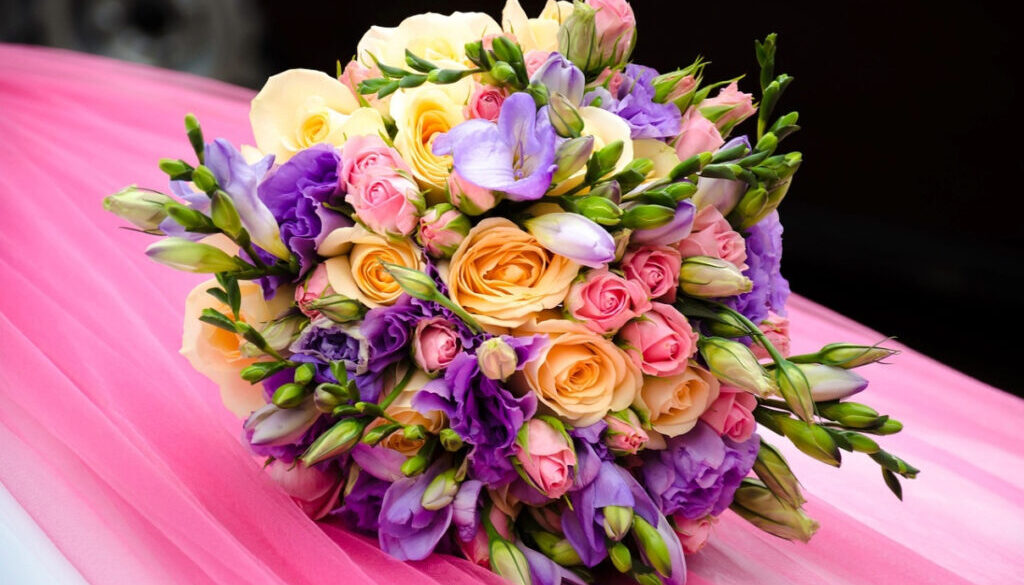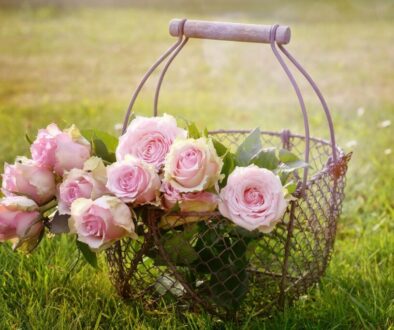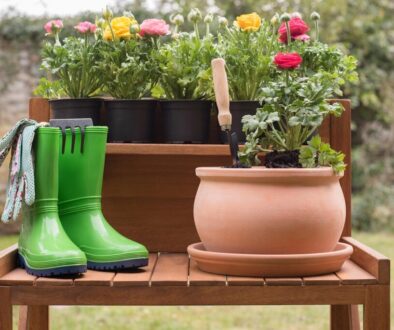The Art of Arranging: Grow Flowers for Stunning Bouquets
Top Flowers for Long-Lasting Cut Arrangements
Fresh flowers bring beauty, fragrance, and charm into your home, but nothing’s more frustrating than watching a bouquet wilt too soon. If you want cut flowers that stay fresh for days, even weeks, you need to choose the right varieties. Some flowers naturally last longer in vases, giving you more time to enjoy their vibrant colors and delightful scents. Here are the best long-lasting flowers for your next arrangement.
1. Chrysanthemums – The Champions of Longevity
Chrysanthemums, often called mums, are one of the longest-lasting cut flowers you can find. These bright, cheerful blooms can last up to three weeks in a vase with proper care. Available in a variety of colors and shapes, mums add texture and depth to any floral arrangement. To keep them looking fresh, trim the stems every few days and change the water regularly. Bonus tip: Remove any leaves that sit below the waterline to prevent bacterial growth.
2. Alstroemeria – Colorful and Long-Lasting
Alstroemeria, also known as Peruvian lilies, bring a splash of color and elegance to any bouquet. These trumpet-shaped blooms last up to two weeks, making them a favorite among florists and home decorators. Alstroemeria flowers come in various hues, including pink, orange, purple, and white, often with speckled petals for added charm. Keep them away from direct sunlight and remove wilting flowers to extend their lifespan.
3. Carnations – A Classic That Stands the Test of Time
Carnations are well-loved for their ruffled petals and sweet, clove-like fragrance. Even better, they are among the longest-lasting cut flowers, often staying fresh for two to three weeks. Available in nearly every color imaginable, carnations fit into any floral arrangement, from elegant centerpieces to casual bouquets. To help them thrive, cut the stems at an angle and place them in a clean vase filled with fresh water.
4. Orchids – Exotic and Surprisingly Durable
Orchids may look delicate, but they are surprisingly long-lasting when cut. Phalaenopsis orchids, in particular, can remain fresh for up to three weeks. These exotic flowers add a touch of sophistication to any setting. For best results, place them in room-temperature water and mist their petals occasionally to maintain moisture. Keep them away from direct heat sources to preserve their beauty for as long as possible.
5. Zinnias – A Burst of Color That Lasts
Zinnias are bright, cheerful, and incredibly resilient in a vase. They can last up to two weeks if properly maintained. These flowers come in various bold colors like red, yellow, and purple, making them a great choice for lively floral arrangements. To keep them fresh, change the water every few days and remove any spent blooms to encourage longevity.
6. Lilies – Fragrant and Elegant
Lilies are known for their striking beauty and intoxicating scent. Many varieties, including Asiatic and Oriental lilies, last up to two weeks in a vase. As their buds open gradually, you get a continuous display of fresh flowers. To maximize their lifespan, remove the pollen-covered stamens as soon as the flowers bloom, and keep them in a cool location away from direct sunlight.
7. Sunflowers – Bright and Sturdy
Sunflowers bring warmth and joy to any arrangement with their bold, sunny faces. While they may not last as long as chrysanthemums or orchids, they can stay fresh for about 10 to 12 days with proper care. Trim the stems regularly and place them in a tall vase with plenty of water. Sunflowers naturally drink a lot, so check the water level daily.
8. Roses – A Timeless Favorite
Roses are a classic choice for cut flowers, and with the right care, they can last up to two weeks. To extend their life, cut the stems at an angle and place them in lukewarm water. Change the water every two days and remove any wilted petals to maintain their freshness. For best results, keep roses in a cool room away from fruit, which releases ethylene gas that speeds up wilting.
Final Tips for Keeping Cut Flowers Fresh
No matter which flowers you choose, proper care makes all the difference. Here are a few extra tips to help your bouquet last longer:
- Use a clean vase to prevent bacteria from shortening flower life.
- Trim the stems at an angle before placing them in water to improve absorption.
- Add flower food or a teaspoon of sugar to nourish the blooms.
- Keep flowers away from direct sunlight, heating vents, and ripening fruit.
- Change the water every two days to keep it fresh and clear.
With these long-lasting flowers and simple care techniques, you can enjoy fresh, beautiful bouquets for weeks. Next time you’re picking out cut flowers, choose wisely and make your arrangements last longer!
How to Time Your Planting for Continuous Blooms
Nothing is more rewarding than a garden bursting with color from early spring to late fall. But if you’ve ever planted flowers only to watch them bloom all at once and then fade, you know the frustration. The secret to a garden that stays vibrant through the seasons is strategic planting. With a little planning, you can enjoy a never-ending floral display. Here’s how to time your planting for continuous blooms.
Understand Your Local Growing Season
Before you start planting, it’s essential to know your region’s growing season. Your local climate dictates when plants thrive and when they struggle. Check your USDA Hardiness Zone or use a planting calendar to guide your choices. Some flowers tolerate cool weather, while others need the warmth of summer to flourish. By choosing a mix of early, mid, and late-season bloomers, you can ensure your garden stays colorful from the first thaw to the first frost.
Choose a Mix of Flowers with Different Bloom Times
One of the best ways to guarantee continuous blooms is to select flowers that bloom at different times. Start with early bloomers like crocuses, daffodils, and tulips to brighten your garden as winter fades. Mid-season flowers such as roses, daisies, and coneflowers will carry the display through summer. Finally, late-season bloomers like chrysanthemums and asters will ensure your garden remains beautiful into fall. Layering your flowers this way prevents gaps in color and keeps your garden lively all season.
Stagger Your Planting Schedule
Timing isn’t just about selecting different types of flowers—it’s also about when you plant them. Many annuals and perennials can be planted in waves to extend their blooming periods. For example, sowing zinnias or cosmos every two to three weeks ensures you have fresh blooms as older ones fade. This method works well for vegetables too, if you enjoy a mix of edible and ornamental plants in your garden. Staggering your planting schedule is a simple trick to keep your garden looking lush and full.
Use Succession Planting for Perennials
Perennials can provide long-lasting color, but not all bloom for extended periods. To avoid downtime in your garden, use succession planting. This means pairing perennials with different bloom cycles so that when one stops flowering, another starts. For example, plant peonies to bloom in spring, followed by black-eyed Susans in summer, and finish with goldenrod in fall. This method ensures there’s always something in bloom, giving your garden a natural, effortless beauty.
Consider Deadheading and Pruning for Extended Blooms
Some flowers will bloom longer if you remove spent blooms—a process called deadheading. Roses, petunias, and marigolds are just a few flowers that benefit from this technique. Regular pruning also encourages plants to produce new buds, keeping them in bloom longer. If you’re growing perennials, trimming them back after their first flowering can sometimes promote a second round of blooms later in the season.
Take Advantage of Self-Seeding Flowers
If you love a garden that looks effortlessly beautiful year after year, self-seeding flowers can be a game-changer. Plants like poppies, larkspur, and coreopsis drop seeds that sprout the following season, creating a natural cycle of continuous blooms. Allowing some flowers to go to seed means you’ll have fresh flowers without the extra work of replanting each year.
Plan for Seasonal Color with Foliage and Evergreen Plants
Flowers may be the stars of the show but don’t forget about foliage. When flowers aren’t blooming, colorful leaves and evergreen plants can keep your garden looking full. Ornamental grasses, hostas, and coleus provide visual interest even when blooms are sparse. By mixing in plants with rich textures and varying shades of green, you create a more dynamic and engaging landscape.
Creating a garden that blooms continuously is all about planning and variety. By selecting flowers with staggered bloom times, planting in waves, and maintaining your plants with deadheading and pruning, you can enjoy a colorful display from spring to fall. Add in some self-seeding flowers and evergreen plants, and your garden will never have a dull moment. With these simple strategies, your outdoor space will be bursting with life all season long!
Tips for Cutting and Caring for Fresh Flowers
Nothing brightens up your home like a beautiful bouquet of fresh flowers! But if you want your cut flowers to last longer, you need the right techniques. From choosing the best time to snip your blooms to keeping them fresh in a vase, these simple yet effective tips will help you enjoy your flowers for days.
1. Cut at the Right Time of Day
Timing matters when cutting fresh flowers. The best time to cut flowers is early in the morning or late in the evening when temperatures are cooler. Flowers are more hydrated at these times, meaning they’ll stay fresher for longer once placed in a vase. Avoid cutting flowers in the middle of the day, as heat causes them to dehydrate quickly.
2. Use Sharp, Clean Tools
Dull or dirty cutting tools can damage flower stems and introduce bacteria that shorten their lifespan. Always use sharp, clean pruning shears or scissors when cutting flowers. If you notice any sticky residue, rinse your tools in warm, soapy water or wipe them down with rubbing alcohol to prevent bacteria from spreading to your fresh bouquet.
3. Cut Stems at an Angle
When cutting flowers, always snip the stems at a 45-degree angle instead of straight across. This increases the surface area for water absorption, helping flowers stay hydrated. A straight cut can make the stem sit flat against the vase bottom, limiting its ability to take in water.
4. Remove Extra Leaves and Foliage
Before placing flowers in a vase, remove any leaves that would sit below the waterline. Submerged leaves can rot quickly, promoting bacteria growth and causing flowers to wilt faster. Keeping only the necessary foliage will not only improve water quality but also help your bouquet look cleaner and more elegant.
5. Choose the Right Vase and Water
Your choice of vase and water quality can significantly affect how long your flowers stay fresh. Use a clean vase and fill it with lukewarm water, as most flowers absorb water better at this temperature. Avoid using extremely hot or cold water, which can shock the flowers. If possible, use filtered or dechlorinated water to reduce harmful chemicals that may shorten the life of your blooms.
6. Add Flower Food or a DIY Solution
Commercial flower food packets contain essential nutrients that help flowers stay fresh longer. If you don’t have any, make a homemade solution by adding a teaspoon of sugar and a few drops of lemon juice or vinegar to the water. The sugar provides nourishment, while the acid helps prevent bacterial growth. You can also add a few drops of bleach to keep the water clear and free from bacteria.
7. Change the Water Regularly
Fresh water is one of the simplest yet most effective ways to keep flowers looking their best. Change the water in your vase every two days and rinse the vase thoroughly to remove bacteria buildup. If you notice the water becoming cloudy, replace it immediately. Clean water means fewer bacteria and longer-lasting flowers.
8. Re-cut the Stems Every Few Days
Even after being placed in water, flower stems can dry out and develop blockages that prevent them from absorbing moisture. To keep your flowers hydrated, trim about half an inch from the bottom of each stem every two to three days. Always cut at an angle and immediately return the flowers to fresh water to maintain their ability to drink properly.
9. Keep Flowers Away from Heat and Direct Sunlight
Your flowers may love the sun when growing in the garden, but once they’re cut, direct sunlight can cause them to wilt faster. Keep your vase in a cool, shaded area away from heating vents, radiators, or electronics that produce heat. Also, avoid placing flowers near fruit, especially bananas and apples, as ripening fruit releases ethylene gas that speeds up the aging process of flowers.
10. Mist Your Flowers for Extra Freshness
Want to give your flowers a little extra boost? Lightly mist the petals with water once or twice a day to keep them hydrated, especially in dry indoor conditions. This works particularly well for delicate blooms like roses and hydrangeas that tend to dry out faster. Just make sure not to overspray, as excessive moisture can lead to mold or mildew.
Enjoy Your Beautiful, Long-Lasting Flowers!
With these easy flower care tips, you can enjoy your fresh-cut blooms for as long as possible. A little attention to detail—from the way you cut stems to how you maintain water quality—goes a long way in keeping flowers vibrant and beautiful. Follow these steps, and your floral arrangements will stay fresh and bright for days.
Creative DIY Bouquet Ideas for Any Occasion
Flowers have a magical way of brightening any day, making them perfect for gifts, celebrations, or home decor. But buying a ready-made bouquet can be expensive, and it might not always have the personal touch you want. That’s where DIY bouquets come in! Whether you’re making a gift for a loved one, decorating your home, or preparing for a special occasion, crafting your own bouquet is a fun and rewarding experience. Here are some creative DIY bouquet ideas you can easily make for any event.
1. Rustic Charm: Wildflower Bouquets for Casual Gatherings
If you love a natural, effortless look, a wildflower bouquet is the perfect choice. You don’t need fancy or expensive flowers—just gather blooms from your garden, a local field, or even the farmers’ market. Think daisies, lavender, sunflowers, and baby’s breath. Combine different textures and colors to create a free-spirited, rustic arrangement that looks straight out of a countryside wedding.
For a casual picnic, backyard party, or even a housewarming gift, tie your bouquet together with twine or a burlap ribbon for an extra rustic touch. Add some eucalyptus or herbs like rosemary for a fragrant surprise. These bouquets don’t need to be perfect—just let nature’s beauty shine through!
2. Elegant and Classic: Rose Bouquets for Romantic Occasions
Nothing says romance like roses, and a DIY rose bouquet can be just as stunning as a professional arrangement. Choose a mix of roses in different shades—reds for passion, pinks for admiration, or whites for purity. For a fuller look, add in baby’s breath, eucalyptus, or even some peonies.
To keep your bouquet looking polished, remove excess leaves and cut the stems at an angle before arranging them. Wrap the stems with satin ribbon and secure them with floral tape for a sophisticated finish. Whether for an anniversary, Valentine’s Day, or a wedding, a handmade rose bouquet will always impress.
3. Fun and Playful: Bright Bouquets for Birthdays and Celebrations
When celebrating a birthday or any joyous occasion, a vibrant, cheerful bouquet can bring smiles instantly. Use flowers in bold, bright colors like gerbera daisies, tulips, sunflowers, and chrysanthemums. Mix and match colors like yellow, orange, pink, and purple for a fun, energetic vibe.
For an extra playful touch, add decorative elements like colorful ribbons, tissue paper, or even tiny balloons on sticks. You can also use a quirky container instead of a regular vase—think mason jars, tin cans, or even a small watering can. This bouquet will instantly lift anyone’s spirits and make your gift truly memorable.
4. Elegant Simplicity: Monochrome Bouquets for Formal Events
Sometimes, less is more. A monochrome bouquet can be striking and sophisticated, making it perfect for formal events like graduations, office parties, or sympathy gifts. Choose flowers in a single color but mix different types to add texture. For example, an all-white bouquet with roses, lilies, and hydrangeas looks incredibly chic.
For a modern twist, opt for deep, rich colors like burgundy or dark purple. Use sleek wrapping paper or a simple white ribbon to keep the look elegant and refined. The simplicity of a monochrome bouquet makes it timeless and effortlessly stylish.
5. Whimsical Garden: Seasonal Bouquets for Every Occasion
If you want a bouquet that feels personal and unique, use flowers that are in season. Seasonal bouquets not only look fresh and beautiful but are also more affordable. In spring, go for tulips and daffodils; in summer, opt for dahlias and zinnias. Autumn calls for warm-toned chrysanthemums and marigolds, while winter bouquets can feature evergreens, poinsettias, and white lilies.
To make your bouquet extra special, incorporate foliage, branches, or even dried flowers for added dimension. Wrap it in kraft paper for a cozy, handmade touch. These bouquets are great for any occasion, from casual get-togethers to heartfelt gifts.
Final Thoughts
Creating your own bouquet is a wonderful way to express creativity and personalize a gift. You don’t need to be a florist—just have fun mixing colors, textures, and accessories to make something beautiful. Whether you’re crafting a bouquet for a romantic date, a festive celebration, or just to brighten someone’s day, these DIY ideas will help you make it extra special. So grab some flowers, get creative, and enjoy the beauty of a handmade bouquet!
Happy Gardening!














